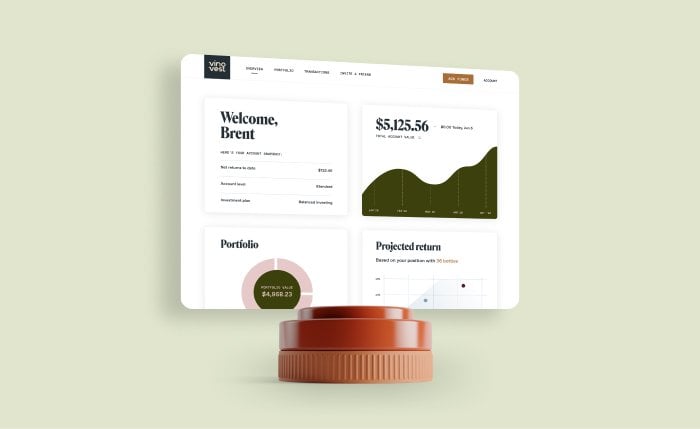5 Currency Hedging Strategies (Pros & Cons, A Better Alternative)
If you invest or conduct business internationally, you need to explore currency hedging strategies.
They’re meant to protect you against fluctuating currency movements and boost your returns.
But, what is currency hedging, and do traditional strategies really work?
This article covers everything about currency hedging, the best currency hedging strategies, and whether or not currency hedging is worth it.
You’ll also discover why it’s worth diversifying your portfolio with a profitable asset like fine wine.
Further reading
- Here are the 10 Hedging Strategies That’ll Reduce Your Portfolio Risk.
- Want to discover how to easily invest in the finest wines? This Fine Wine Investment Guide covers everything you need to know!
What Is Currency Hedging and How Does It Work?

Currency hedging refers to using financial instruments (called derivative contracts) to mitigate the impact of foreign exchange risk (FX risk.) This risk management strategy reduces the effects of currency fluctuation on your business or investment portfolio.
Meanwhile, foreign exchange risk refers to the risk that the currency exchange rate might change unfavorably before payment is made or received.
When firms conduct business across borders, they deal in foreign currencies. So, these firms are prone to FX risk when they exchange foreign currencies for home currencies.
For instance, if a Canadian company conducts business in the United States, it has to exchange the US dollar for the Canadian dollar. Doing this exposes it to the risks associated with exchange rate fluctuations.
Foreign exchange hedging (FX hedging) is done using either a cash flow hedge or a fair value hedge.
Fair value hedges are used to mitigate the risk of the changes in the fair market value of assets. Meanwhile, cash flow hedges reduce the risks associated with sudden fluctuation in the cash flow of assets or liabilities.
Now, let’s check out the popular methods for hedging currency.
What Are the Best Currency Hedging Strategies? (5 Options, Pros & Cons)
Here are the excellent strategies for hedging against currency volatility:
- Use a Forward Contract
- Use a Futures Contract
- Use Currency Swaps
- Use a Currency Option
- Invest in Hedged Foreign Bond Funds (ETFs and Mutual Funds)
1. Use a Forward Contract

Using a forward contract is one of the best ways to mitigate the impacts of foreign exchange risk (FX risk.) This hedging strategy involves buying a certain amount of foreign currency at a future date and a predetermined exchange rate.
This option locks in today’s exchange rate and protects you from losses if the foreign currency value drops. However, a forward contract could result in a loss if the foreign currency value rises.
For example, you can use this foreign exchange derivative product if you’re based in Canada but conduct business in the US. However, this currency hedge strategy will only help if the value of the US dollar drops relative to the Canadian dollar (not the other way around.)
2. Use a Futures Contract

A futures contract is almost similar to a forward contract - it involves hedging currency risk by buying or selling currency at a specified price and date.
However, a forward contract is private, customizable, and is traded over the counter (directly between two parties, without a broker or central exchange.) Meanwhile, a futures contract is standardized and is traded on stock exchanges.
Because a futures contract is regulated, it comes with less counterparty risk. So, it’s often safer to hedge against currency volatility using this option.
3. Use Currency Swaps

A currency swap is another reliable foreign exchange derivative that helps hedge currency risk. This foreign exchange hedging (FX hedging) strategy involves exchanging interest payments and principal amounts in two different currencies.
Swaps are often used to hedge against exchange rate fluctuations and to borrow in foreign currency at a lower interest rate.
4. Use a Currency Option

A currency option gives you the right to exchange foreign currency at a specific exchange rate, and on a specified date. This ensures that currency fluctuation doesn’t affect your return on investment.
The best currency options that’ll help you hedge against currency risk include put and call options.
5. Invest in Hedged Foreign Bond Funds (ETFs and Mutual Funds)

Investing in foreign bonds is also a brilliant foreign currency hedging strategy. Some of the best options worth putting your money into include currency-hedged ETFs (Exchange-Traded Funds) and mutual funds.
The best part?
This hedging strategy mitigates your currency exposure risk regardless of the market conditions.
So, as an investor, you could reduce your portfolio volatility and foreign currency exposure risk by investing in reliable hedged foreign bonds.
But, if you’re serious about building a hedged portfolio, you should also explore other profitable, long-term alternative investments like fine wine.
Is Currency Hedging Worth It?

Hedging currency risk can be a great idea - especially if you use reliable currency hedge products. This strategy reduces your risk exposure and makes it easy for you to invest and conduct business across borders.
However, there are lots of risks involved in hedging against foreign exchange exposure.
For example, it’s often too risky to make long-term investments based on foreign currency movements. That’s because it’s hard to predict currency movements, and this could be detrimental to your business or investments.
Also, hedging currency risk can be quite complicated and costly.
When there’s a currency fluctuation, you might have to use various currency risk hedging methods. However, this costs you both time and money, and there’s no guarantee that your investments will be worth it.
Although some hedging products can reduce foreign exchange exposure, it’s often difficult to choose the right products at the right time.
Now, do you want to reduce your portfolio’s volatility?
Invest in a profitable, more reliable asset like fine wine!
Fine Wine Investment: An Excellent Alternative for Your Portfolio

Investing in fine wine is an excellent way to reduce portfolio volatility. That’s because fine wine tends to be profitable all the time - be it during inflation or other economic downturns.
Also, investing in this asset usually yields more returns than other options like ETFs and mutual funds. In fact, fine wine always outperforms most stocks - it delivered about 26% returns during the 2008 Great Recession, while stocks dropped by 52%.
But that’s not all!
In the first quarter of 2022, the average Vinovest fine wine produced a 5.9% return on investment. If this pace continues, the wines could yield a whopping 22.36% annual return by the end of 2022.
So, check out the Vinovest website today and start investing in the world’s finest wine bottles. This site makes it easy for you to buy, store, and sell the best investment-grade wine bottles.
Beat Forex Risk By Investing in Wine!

Foreign currency hedging is a brilliant risk management strategy that’s worth giving a try. This technique reduces foreign currency exposure risk and can boost your return on investments.
But, as an investor who’s ready to build a diversified and hedged portfolio, you need to check out an option like fine wine. This asset is profitable even during interest rate hike periods, inflation, and other economic downturns.
Visit the Vinovest website today to start your fine wine investment journey. It’s an incredible platform that helps you buy, store, and sell the best wines from all over the world.



